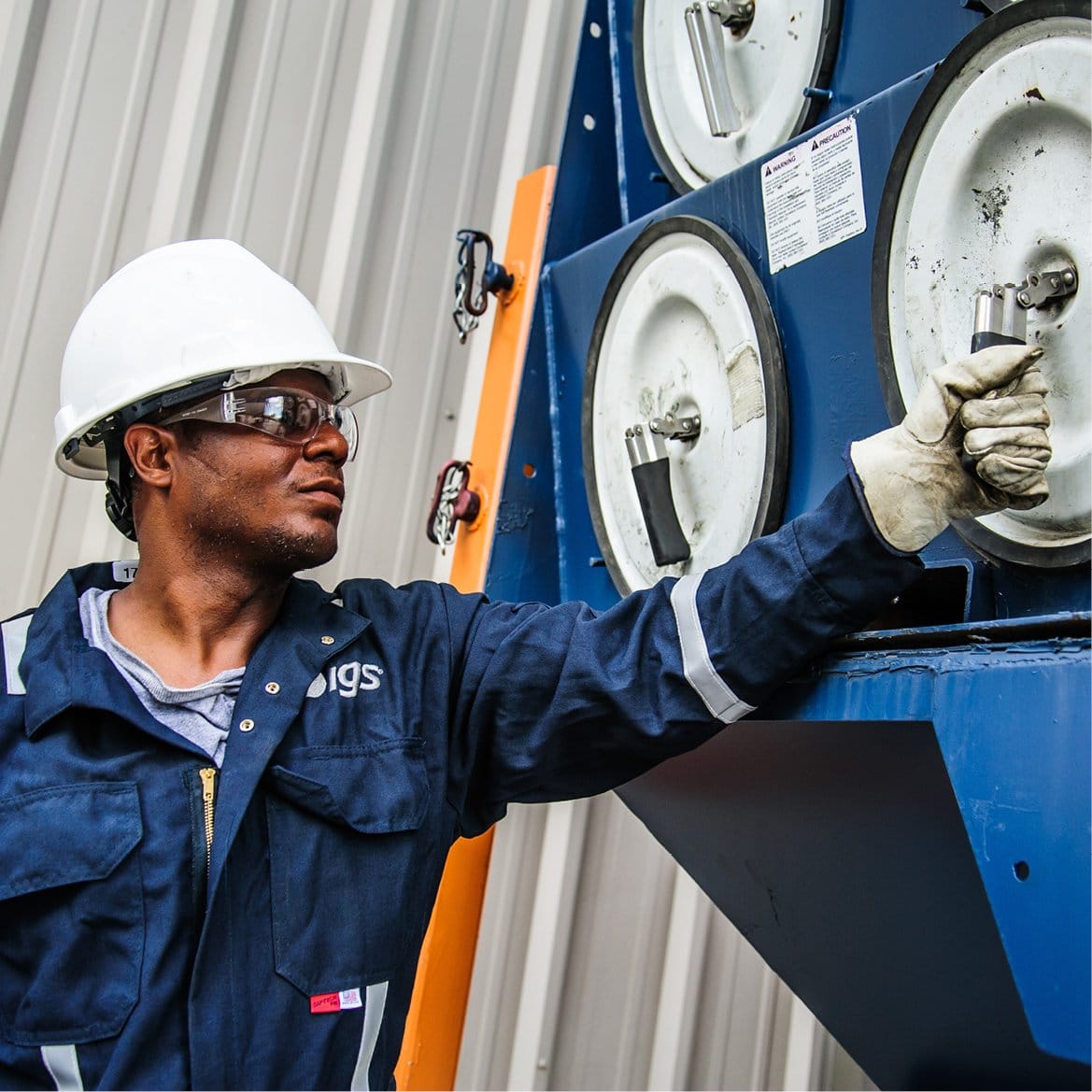We internally protect Flare knockout drums from corrosion and metal wastage on-site using IGS HVTS cladding solutions.
The installation of IGS HVTS claddings as a corrosion mitigation strategy reduces future maintenance costs, repair requirements, and downtime.
Our proprietary coating technology is paired with unmatched site experience. We execute projects to strict quality standards in tight schedules on shutdown/turnaround critical paths.
We spray metal alloy coatings in North America, Europe, Middle East, Africa, Asia, and other parts of the world.

Flaring systems are an integral and critical safety component for any oil & gas or petrochemical plant. The facility cannot operate unless the flare system is functioning as at any moment in time it may be necessary to safely vent and flare process fluids or gases from any section of the plant. If the flare system is out of service for maintenance, the plant cannot operate, hence the importance of these critical systems to productivity and operation.
Flare Knock Out (KO) drums, pots, or vessels are a key component of the flare system and used to slow down gas flow by creating a pressure drop, allowing liquids and condensate to fall out of the vented gas stream ahead of combustion in the flaring system. Knock-out drums can be installed either in the waste gas header or at the base of the flare stack itself. Water and oil drains with level controls (including vessel sumps or boots) are used to ensure that liquids are drained from the knock-out drum, controlling liquid levels and preventing chocking, enabling gases to proceed to the flare stack or back into the process stream for additional recovery.
Due to the function of the flaring system as an emergency venting facility, it can and will receive feed from any part of the plant or process. Consequently, the feed entering the flare KO system is often uncontrolled and varied in terms of pressure, temperature, and chemical composition. It is therefore not easy to determine the primary corrosion bad actors. In addition to sour gases such as H2S and CO2, other sulfur compounds, and even elemental sulfur can be found. Chlorides (CaCl2, MgCl2 and NaCl), wet carbon dioxide, hydrogen sulfide, and amines can be present, resulting in localized high pitting corrosion rates and internal metal wastage if an effective corrosion barrier is not installed.
The highest corrosion rates typically occur in the lower section of KO drums, the liquid and vapor phase between the 4 and 8 o’clock positions, where the condensate settles. In spite of post-fabrication heat treatment, the weld seams around nozzles, structural welds, etc. are highly prone to aggressive pitting and metal loss due to the localized variations in metal properties and nobility.

The operating conditions in a flare KO drum are highly varied, due to their function. Corrosion management strategies for the internal protection of these vessels have included the use of organic coating systems, vessel section replacement and complete vessel replacement. Limitations exist with respect to the long-term durability of liquid epoxy coatings in this challenging environment, with repeat premature failure of the corrosion barrier, exposing the vessel shell to the corrosive environment, leading to metal wastage and loss of the pressure boundary wall thickness, often occurring prior to inspection and discovery at the next available shutdown or turnaround. Once this type of metal wastage has occurred, mechanical repairs to the vessel will be necessary (e.g. section replacement or weld build up) leading to Heat Affected Zones (HAZ), Post Weld Heat Treatment (PWHT) requirements, and new locations at a high risk of corrosion (weld seams, etc.)
This type of discovery scope leads to challenging repair requirements, a negative impact on shutdown schedules, the flare plant, and the process availability. Turnaround time restrictions limit the feasibility and attractiveness of mechanical repairs or section / vessel replacement.
IGS HVTS cladding technology allows the process owner to upgrade the internal metal alloy of a flare KO drum in-situ, as required. In other words the section most at risk of attack, for example, the bottom 1/3rd of the equipment, can be coated with a high nobility, highly Corrosion Resistant Alloy (CRA), both to install a new CRA cladding or to upgrade or extend an existing clad area, without the creation of HAZ or the requirement for PWHT.
IGS’s HVTS corrosion resistant alloy cladding is non-reactive and inert to the wide-ranging operating environment in flare KO drums, freezing the metal condition and preventing any further internal metal wastage.
This technology, combined with the unmatched site experience of IGS in executing projects to strict quality standards on tight time schedules during shutdown / turnaround critical paths, provides the asset integrity manager with a turnkey, long-term solution to flare KO drum corrosion.

IGS standard Quality Control (QC) practices include the final inspection of the work scope and the generation of an electronic thickness record with mapped electromagnetic stand-off gauge readings on a defined reference grid across the area of the vessel clad with HVTS. This record, as well as selected bench marked locations, are used for later inspections to confirm, in service, that the HVTS cladding has maintained its integrity and no metal loss had occurred. IGS has developed inspection technologies for external, on-line verification of the internal cladding integrity by through vessel wall scanning.
Unlike organic coating systems, HVTS metallic claddings are robust, long-term durable solutions with high mechanical toughness, abrasion, and steam out resistance and wide service temperature and pressure ranges. Their use can substantially decrease the vessel life cycle cost and can allow plant inspection teams to extend the required inspection intervals and vessel intervention, on these critical pieces of process equipment.
The installation of IGS HVTS claddings as a corrosion mitigation strategy will reduce the future maintenance costs, repair requirements, and downtime of a flare KO drum or pot. Ensuring that the flare system is continually available as required for the safe operation of the plant.
